Results
-
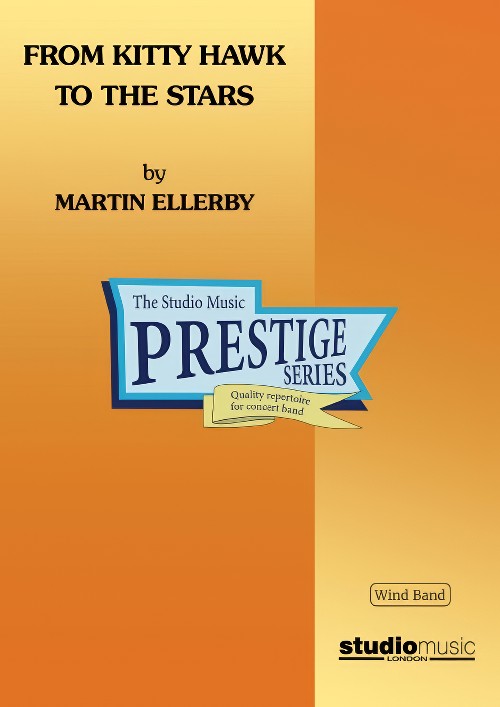 £37.95
£37.95From Kitty Hawk to the Stars (Concert Band - Score only) - Ellerby, Martin
Score only. This work was composed to commemorate the 100th anniversary of flight and is cast in a structure that provides a mini-history of the subject from its first beginning to its one hundred-year achievement in space. The work is, in effect, a tone poem for concert band.Grade 5Performance time 10'04"Recorded on QPRM146D, The Year of the Dragon, Royal Northern College of Music Concert Band
Estimated dispatch 7-14 working days
-
 £159.95
£159.95From Kitty Hawk to the Stars (Concert Band - Score and Parts) - Ellerby, Martin
Parts only. Score available separately. This work was composed to commemorate the 100th anniversary of flight and is cast in a structure that provides a mini-history of the subject from its first beginning to its one hundred-year achievement in space. The work is, in effect, a tone poem for concert band.Grade 5Performance time 10'04"Recorded on QPRM146D, The Year of the Dragon, Royal Northern College of Music Concert Band
Estimated dispatch 7-14 working days
-
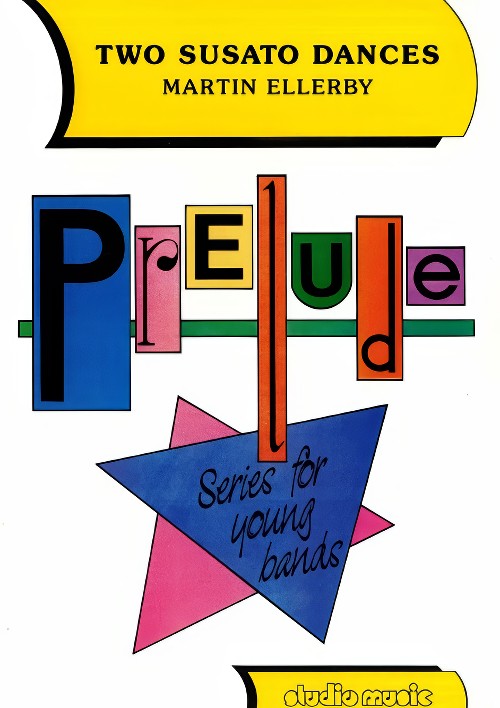 £44.95
£44.95Two Susato Dances (Concert Band - Score and Parts) - Susato, Tielman - Ellerby, Martin
Around 1540 Tielman Susato, the Belgium trumpet player and composer, established himself in Antwerp as a printer of music. In 1551 he brought out The Third Little Music Book, a collection of instrumental dances. Most of these are arrangements, possible by Susato himself, of popular dance tunes. In keeping with sixteenth-century practice, this book details no specific instrumentation; something to be worked out by the players with whatever available means. Doubtless many of the dances were performed on wind instruments at festive outdoor events. The date of Susato's birth is unknown but estimated to be around 1500. The same applied to his death, which is thought to be somewhere between 1561-64.The third Little Music Book gives several examples of the traditional sixteenth-century genre, the dance pair, a predecessor of the Baroque suite. In such a pair the first dance was often in slow or moderate duple time, the second in quick triple time. This is the case in the pair presented here, which consists of a lively round dance followed by a Hop Up or saltarello.Titles in the Prelude Series are specifically scored for bands with few, if any, bass instruments but will sound well on larger ensembles. The bass line is playable by any combination of bass clarinet, bassoon, baritone saxophone, trombone, euphonium or tuba; in the event that none of these is available, the part for trombone/euphonium (B flat TC) can be played by tenor saxophone. The tuned percussion part is entirely optional and can be played by any available instrument(s). Each piece also includes a preliminary exercise. This is always in the same key as the accompanying piece and consists of a scale and chord progression that can be used for improving ensemble, balance, intonation and instrumental facility by changing tempo, articulation and dynamics.Duration: 2.00
Estimated dispatch 7-14 working days
-
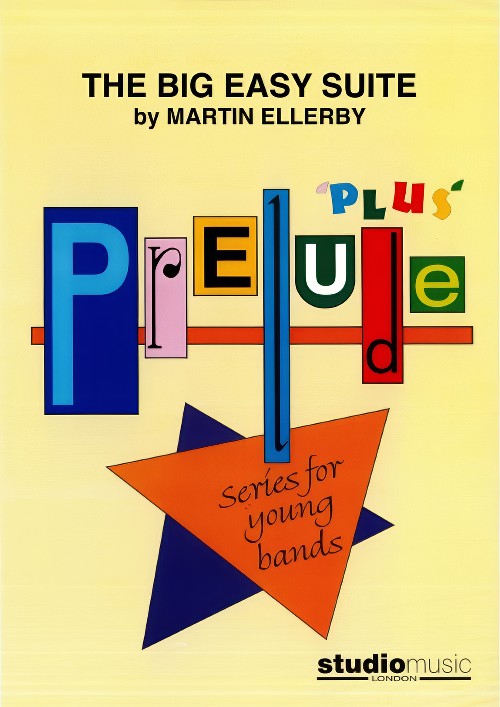 £59.95
£59.95The Big Easy Suite (Concert Band - Score and Parts) - Ellerby, Martin
Sub-titled New Orleans, this suite sets out to recreate musically the joy of living that exists in the 'deep south' city nicknamed the 'Big Easy'.The four movements are:Mississippi Rag - echoing the wonderful music of Scott JoplinSatchmo! - which is a salute to the great Louis ArmstrongBourbon Street Blues - a gentle interlude, nothing to do but relaxMardi Gras - a time for the city to erupt into colour, music and dance.Fun to play and fun to listen to!Duration: 6:45
Estimated dispatch 7-14 working days
-
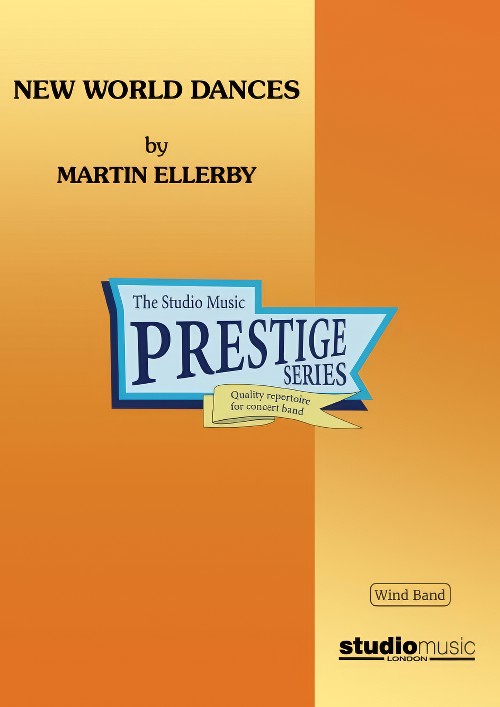 £32.95
£32.95New World Dances (Concert Band - Score only) - Ellerby, Martin
Cast in three short movements the work endeavours to recreate the pioneering spirit of the journey across America (the then 'New World') as this vast continent was opened up and its wonders exposed. The three dance episodes that make up the suite are symbolic in an analogous sense to this 'reaching' principle: the first - Earth Dance - is a vigorous overture, pushing out the frontiers; the interlude - Moon Dance - contemplates the huge distances to be crossed and Sun Dance represents the realisation of the American dream, rhythmic and full of energy. Written in affectionate tribute to America and its people, New World Dances was rather symbolically completed on July 4th!Grade 6Performance time 8'45"Recorded on QPRM134D The Kings Go Forth, Central Band of the Royal Air Force
Estimated dispatch 7-14 working days
-
 £194.95
£194.95New World Dances (Concert Band - Score and Parts) - Ellerby, Martin
Cast in three short movements the work endeavours to recreate the pioneering spirit of the journey across America (the then 'New World') as this vast continent was opened up and its wonders exposed. The three dance episodes that make up the suite are symbolic in an analogous sense to this 'reaching' principle: the first - Earth Dance - is a vigorous overture, pushing out the frontiers; the interlude - Moon Dance - contemplates the huge distances to be crossed and Sun Dance represents the realisation of the American dream, rhythmic and full of energy. Written in affectionate tribute to America and its people, New World Dances was rather symbolically completed on July 4th!Grade 6Performance time 8'45"Recorded on QPRM134D The Kings Go Forth, Central Band of the Royal Air Force
Estimated dispatch 7-14 working days
-
 £164.95
£164.95Euphonium Concerto (Concert Band - Score and Parts) - Ellerby, Martin
This Euphonium Concerto was written between late 1994 and early 1995 in response to a commission from Steven Mead to whom the work is dedicated. It is cast in four movements and lasts a little over 22 mins:I. Fantasy: After the briefest of introductions, the solo euphonium enters with the key melodic phrase of the movement in a fast 'Tempo I'. This idea is developed up to the point where a slower 'Tempo II' breaks the argument - here the mood is reflective but it is only to be a brief interruption as 'Tempo I' returns very quickly. The opening material is then subjected to further transformation with 'Tempo II' making occasional returns en route, the distances between the contrasting tempi becoming ever closer, and the movement closes in a rather soft though definite manner.II. Capriccio: This relatively short presto movement forms a bridge between the first movement and the work's slow movement. The majority of the band parts are bright and muted with the percussion players enhancing the texture with contributions from xylophone, glockenspiel and vibraphone. Again the initial solo euphonium phrase provides the basis for almost all the movement's material. This is extremely virtuosic for the soloist and band alike and makes great play of the rhythmic possibilities of combining simple and compound music either in close proximity or together.III. Rhapsody (for Luis): A Lento movement, sitting between two different but essentially rapid ones, this provides the work's emotional core exploiting the soloist's cantabile qualities in an almost seamless fashion. Again, as will all the work's movements, the initial idea paves the way for subsequent development, eventually culminating in a passionate climax; thereafter it winds down with an affectionate backward glance towards the close of the the slow movement of the Euphonium Concerto of Joseph Horovitz, whose mark had been made indelibly on the euphonium repertoire. This movement is dedicated to Luis Maldonado who set the full score of the brass version before his untimely death.IV. Diversions: The work's variation finale is cast in 3/4 throughout though the barline is often a guideline and was seen by the composer as a challenge of metrical restraint! There is an obvious jazz feel to this movement (both rhythmically and harmonically) with a swaggering ritornello theme first announced by the solo euphonium. Thereafter follows a series of interludes and 'adjusted' returns of the main theme. A lyrical idea is allowed to enter but the underlying momentum is ever present. The band also contributes to the interludes and eventually the tempo increases towards a 'wild' and absolute conclusion.Duration: 22.30Recorded on QPRM143D Dreamscapes, Royal Northern College of Music Wind Orchestra
Estimated dispatch 7-14 working days
-
 £32.95
£32.95Euphonium Concerto (Concert Band - Score only) - Ellerby, Martin
This Euphonium Concerto was written between late 1994 and early 1995 in response to a commission from Steven Mead to whom the work is dedicated. It is cast in four movements and lasts a little over 22 mins:I. Fantasy: After the briefest of introductions, the solo euphonium enters with the key melodic phrase of the movement in a fast 'Tempo I'. This idea is developed up to the point where a slower 'Tempo II' breaks the argument - here the mood is reflective but it is only to be a brief interruption as 'Tempo I' returns very quickly. The opening material is then subjected to further transformation with 'Tempo II' making occasional returns en route, the distances between the contrasting tempi becoming ever closer, and the movement closes in a rather soft though definite manner.II. Capriccio: This relatively short presto movement forms a bridge between the first movement and the work's slow movement. The majority of the band parts are bright and muted with the percussion players enhancing the texture with contributions from xylophone, glockenspiel and vibraphone. Again the initial solo euphonium phrase provides the basis for almost all the movement's material. This is extremely virtuosic for the soloist and band alike and makes great play of the rhythmic possibilities of combining simple and compound music either in close proximity or together.III. Rhapsody (for Luis): A Lento movement, sitting between two different but essentially rapid ones, this provides the work's emotional core exploiting the soloist's cantabile qualities in an almost seamless fashion. Again, as will all the work's movements, the initial idea paves the way for subsequent development, eventually culminating in a passionate climax; thereafter it winds down with an affectionate backward glance towards the close of the the slow movement of the Euphonium Concerto of Joseph Horovitz, whose mark had been made indelibly on the euphonium repertoire. This movement is dedicated to Luis Maldonado who set the full score of the brass version before his untimely death.IV. Diversions: The work's variation finale is cast in 3/4 throughout though the barline is often a guideline and was seen by the composer as a challenge of metrical restraint! There is an obvious jazz feel to this movement (both rhythmically and harmonically) with a swaggering ritornello theme first announced by the solo euphonium. Thereafter follows a series of interludes and 'adjusted' returns of the main theme. A lyrical idea is allowed to enter but the underlying momentum is ever present. The band also contributes to the interludes and eventually the tempo increases towards a 'wild' and absolute conclusion.Duration: 22.30Recorded on QPRM143D Dreamscapes, Royal Northern College of Music Wind Orchestra
Estimated dispatch 7-14 working days
-
 £110.00
£110.00Paris Sketches (Homages for Band) (Concert Band - Score and Parts) - Ellerby, Martin
Specially commissioned by the BASBWE Consortium to meet the requirements of bands of mixed ability and uncertain attendance, but making no artistic compromises. Poetic, humorous, wistful and thrilling, its four movements vividly evoke the spirit - and some of the composers - associated with the great city.Duration: 14 - 15 mins
Estimated dispatch 7-14 working days
-
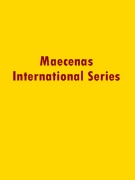 £110.00
£110.00Tuba Concerto (Tuba Solo with Concert Band - Score and Parts) - Ellerby, Martin
This work is beautifully conceived for the medium. The emphasis is on musicality, and the two contrasting movements investigate the under-exploited lyrical side of the instrument as well as allowing soloists to show their technical prowess. The band writing is both practical and extremely effective.Please Note: This set of parts does not include music for the soloist. A piano reduction including a solo part is available for purchase separately.Duration: 13:00
Estimated dispatch 7-14 working days
